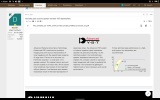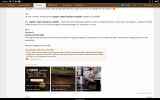DanielT
Major Contributor
Audio Pro had something similar, right?It's hardly rocket science. You can even drive the ouptut stage to a 'negative impedance'. Yamaha did that for a decade (in subwoofers/mini systems) with YST/AST (Yamaha active servo technology). The dedicated HiFi YST speakers came with a cartridge specially configured and you plugged it into the rear of the YST amplifiers. For normal speakers, a flat cartridge was supplied with the amp.
View attachment 176017
Amazing system but never caught on. Could have been a game changer. We ended up selling the amplifiers, systems and speakers really cheaply when they killed the concept after less than a year.
They still use it in the powered subwoofers IIRC.
Attached pictures from this thread:

Motional Feedback (MFB)?
It's somewhat similar to room correction (in FR only) up to 1kHz or so (Philips MFB didn't work as high) but on top of that you reduce distortion in the lows (like seen in NC headphones)
 audiosciencereview.com
audiosciencereview.com


